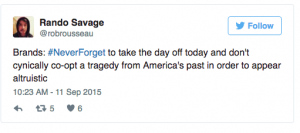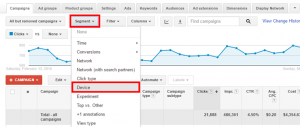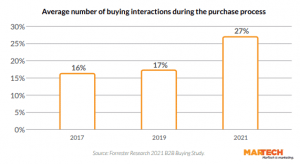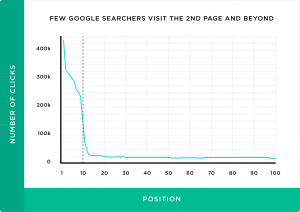Instagram is on pace for another record year of growth in 2019. With increasing saturation, many brands and influencers alike wonder if gaining Instagram followers actually matters. Follower count sometimes helps to give a brand or influencer legitimacy, but recently, it’s done the exact opposite.
In the push to build an Instagram audience, many brands and influencers cut corners by purchasing fake followers that artificially inflate page numbers. This tactic grows the page size at the expense of long-term engagement and can set a brand or influencer up for disappointing results in the future.
If we can’t trust follower count as a key indicator for brand and influencer impact, what actually matters in 2019? For brands and influencers looking to stand out on the popular platform, creating meaningful engagements with their Instagram community should be the main priority.
The ingredients for making 2019 a year full of lasting engagements are readily available and can be easily incorporated into larger social strategies.
Why Engagement
Instagram is unique. The platform breaks down barriers between brands and individuals, as brand posts and stories seamlessly enter a user’s feed. Individuals interact with this content because it’s authentic, visually engaging, and relatable.
In fact, 74% of Instagram users are willing to start relationships with brands that care about more than their bottom line, as evidenced by the content they produce and their integrity over time.
This preference for authenticity shows that consumers are both comfortable with brand storytelling, and are likely to turn engagements into potential purchases.
With more than 1 billion monthly users on Instagram, 72% of whom have bought a product they saw on the platform, brands and influencers have an opportunity to profit in a crowded space by doubling down on meaningful engagements in 2019.
Here are three ways to drive meaningful engagement from Instagram in 2019.
Drill Down
Throughout 2018, brands moved beyond partnering with influencers and microinfluencers to leveraging nanoinfluencers — users with less than a thousand followers.
These hyper-niche users have more authentic relationships with their followers than larger influencers and they can be easier to work with, according to the New York Times. A post from a nanoinfluencer may have less reach, but it can have a higher conversion rate. In fact, Nielsen found that 83% of consumers prefer recommendations from friends and family over other forms of advertising, and nanoinfluencers essentially practice a heightened form of word-of-mouth advertising.
The growth of this subset shows that brands are beginning to compete for smaller and smaller slices of consumers and that influencers have more opportunities for brand partnerships. Further, brands can leverage high-quality nanoinfluencer content on their own channels for additional engagement.
Above all, nanoinfluencers show how authenticity can help branded content resonate with followers and can provide a template for posts in the year ahead. They’re essentially word-of-mouth marketing at scale. Similarly, influencers more broadly should stay true to the persona that drew their followers in the first place by only taking on partnerships that make sense.
Throughout 2019, brands should diversify their use of nanoinfluencers to reach a broader range of consumers with highly targeted content. Brands should also boost the impact of these partnerships by creating shoppable landing pages specific to each influencer.
Leverage existing high-quality engagements to scale
Many brands and influencers have developed strong Instagram followings with compelling and immersive content. To convert these engagements into sales, brands should leverage the content generated by their Instagram community on channels other than Instagram (UGC).
UGC can be gathered on Instagram in a variety of ways. Brands can encourage followers to tag photos featuring products with a specific mention or hashtag, encourage followers to upload images to a website, or host Instagram contests.
When UGC is gathered, brands can post it on their Instagram accounts to showcase loyal customers, create relatable connections with other followers, and promote specific products. They can also repurpose this content on other areas of their website such as product display pages and emails to bring the relatable nature of the content to their other marketing channels.
High-quality UGC can then be used in targeted Instagram ads that lead to built-in shopping experiences, which have been shown to double the likelihood of a sale.
Brands can also extend the impact of high performing UGC by including it in Instagram Stories, on other social platforms, and on brand websites.
Focus on brand authenticity and real followers
Creating authentic engagement doesn’t mean putting a cap on your account’s size. Instead, it means better conveying what your brand stands for, posts that have artistic value, using relevant hashtags and mentions, interacting with followers, and more.
Nearly 64% of consumers say they seek out brands that share their values. That means that the majority of users are interested in learning more about a brand if a post resonates with them. They also become more likely to follow a brand’s account and engage more consistently in the future, potentially leading to sales.
HYLETE, a community-backed performance apparel brand takes value-driven social media to the next level.
“You’re not going to get someone to order that many times unless they feel connected to a brand.” – Jon Palmer, Lead Marketing Manager for HYLETE
Looking ahead, 2019 can still be a year of growth for brands, but it will be growth fueled by meaningful interactions.
See how you can make the most of Instagram marketing in 2019 with our Instagram Marketing Checklist
Digital & Social Articles on Business 2 Community(74)
Report Post






